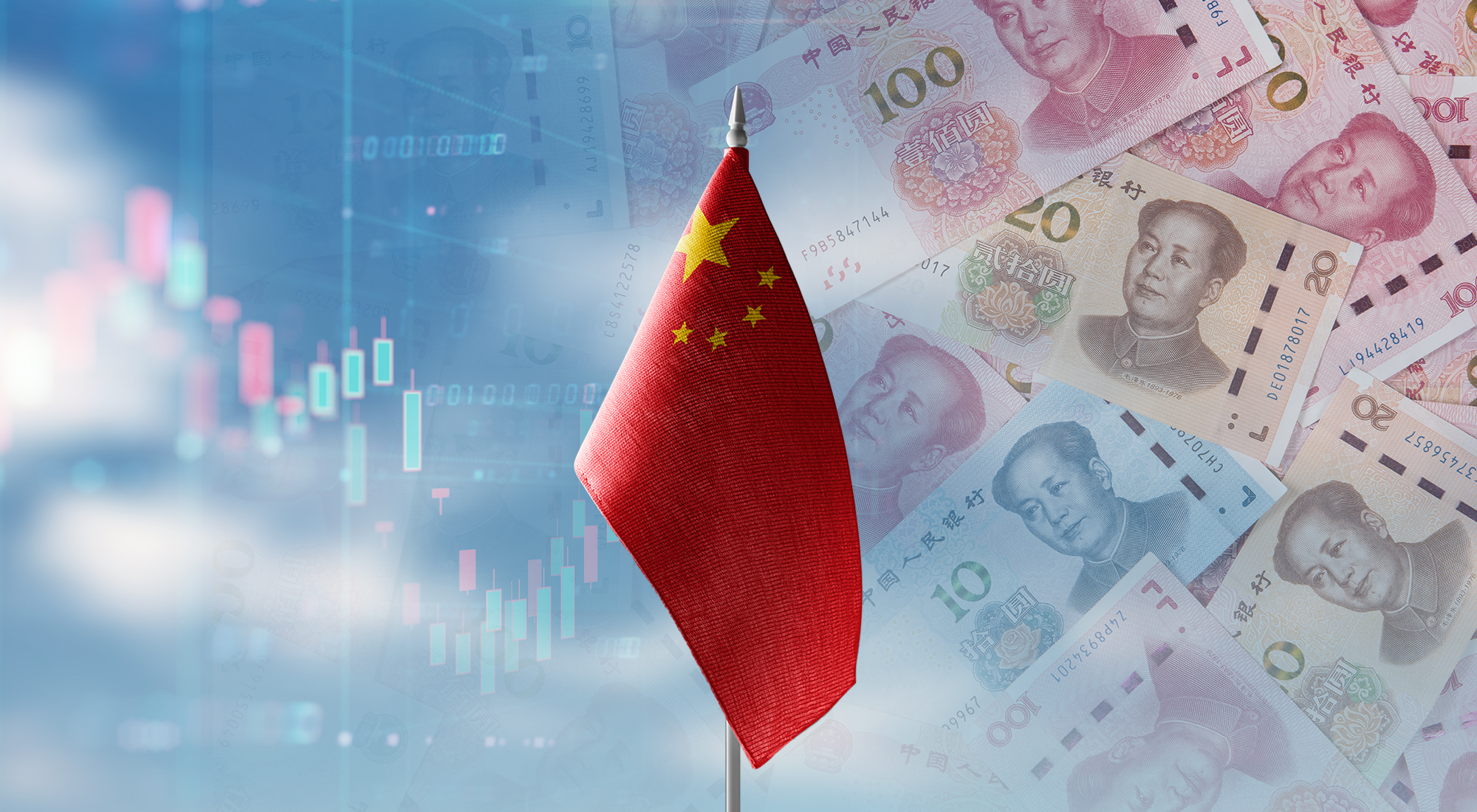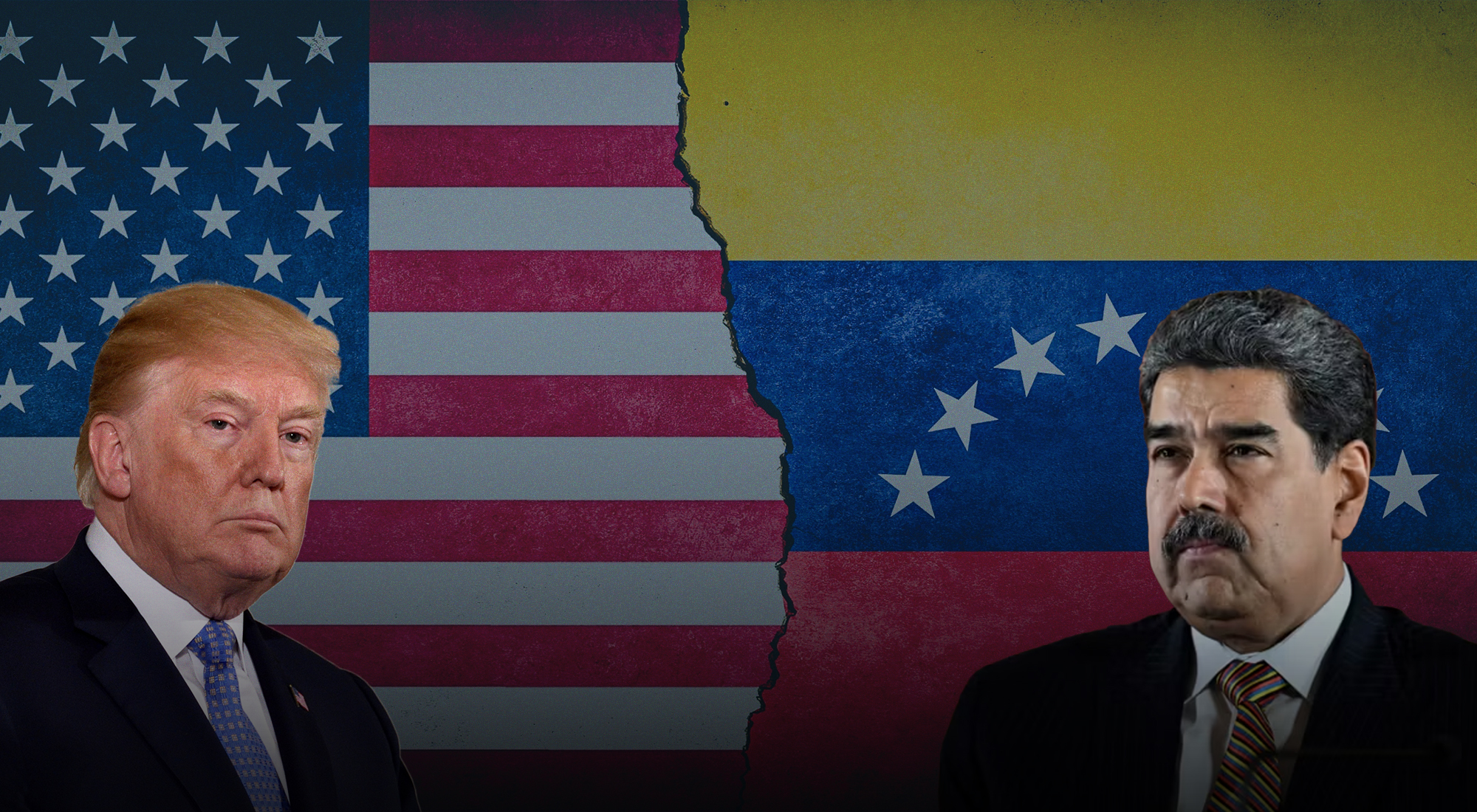Problems in the Chinese economy rarely remain problems just for China.
China is approaching the one-year mark of a significant deflation cycle. Triggered primarily by the country’s well-storied real estate troubles and deteriorating Chinese consumer confidence, but also by falling global demand for Chinese exports, China has been enduring deflation as of July 2023, with the Consumer Price Index (CPI) dropping consistently since then.[1] Indeed, the incremental CPI drops have been the steepest since the 2008-09 global financial crisis.[2] This entrenched deflation has persisted despite government stimulus measures,[3] reflecting the extent of the lack of Chinese consumer confidence. In terms of forecasting the continuity of this deflation, some forecast that the CPI will start to turn positive in 2025.[4] However, given that other analysts point towards China’s struggling property sector struggling to see a significant improvement in the next couple of years,[5] tepid Chinese consumer confidence could endure longer.
China’s economic centrality in the Middle East is clear. China became the second largest trading partner of the Arab League as of 2014,[6] and the primary trading partner for ten Arab countries as of 2017.[7] Since 2013, Beijing has pursued an economic strategy focused on boosting cooperation, developing infrastructure, and increasing trade with Middle Eastern nations. This strategy stems from China’s massive Belt and Road Initiative (BRI), a global infrastructure/investment initiative to boost connectivity and economic ties, resulting in the formation of comprehensive economic partnerships and cooperation agreements with multiple Middle Eastern states. Chinese economic ties with these nations have spanned energy, construction projects, commerce, and investments, generating substantial two-way financial flows between China and the Middle East.
Another key driver of rising Chinese-Middle Eastern economic ties has been China’s Industrial Capacity Cooperation policy of offshoring excess manufacturing capacity abroad, including civil nuclear, energy, satellites, transport, telecoms, aerospace and more, to Middle Eastern nations.[8] This synergy between Chinese industrial policy and Middle Eastern economies highlights the country’s potential central role in the region’s industrialization. This process of transfer is being accompanied by China’s investments in port and land transport infrastructure in the region, connecting the flows of industrial outputs to China, or its targeted markets.
Clearly, then, the fate of China’s economy poses significant implications for the prospects and growth ambitions of Middle Eastern economies. Accordingly, could the abovementioned Chinese economic struggles lead to negative outcomes for its trade and investment with the Middle East?
1) Effects on trade: Chinese imports from Middle East
China’s imports from the Middle East are overwhelmingly hydrocarbon-based; the share of imports from the region that are hydrocarbons and hydrocarbon-related products ranges from 73.0% to 83.8%.[9] Accordingly, a domestic Chinese economic slowdown and decreasing Chinese demand for oil would portend significant implications for China-Middle East trade balances. However, the fact that the Chinese government has increased its oil import quota for 2024 by 4% from the 2023 level[10] indicates that Chinese demand for Middle Eastern oil is unlikely to drop in the short term.
Nonetheless, Chinese oil demand in general is beginning to enter a low-growth phase as decarbonization efforts, improved renewable energy efficiency, and the rise of electric vehicles (EVs) and natural gas-powered trucks start to reduce fossil fuel consumption in the country.[11] Indeed, the ascent of electric vehicles and natural gas-powered trucks is expected to replace around 10-12% of China’s gasoline and diesel consumption this year.[12] While an outright decline in Chinese oil demand is not expected soon, its demand growth is projected to slow significantly. A noticeable decline may emerge in the 2030s as electrification, efficiency gains, and petrochemical demand saturation have more of an impact.[13] As the rate of growth of Chinese demand for Middle Eastern oil slows, this will likely have notable effects on the current account balances of Middle Eastern oil exporters.
In terms of the implications of China’s deflation cycle for its exports to the Middle East, the falling domestic demand for Chinese goods will likely lead to an increase in Chinese exports as Chinese businesses seek customers elsewhere. The falling prices of Chinese exports as a result of decreasing demand also bodes well for Middle Eastern markets. An increase in Chinese exports to the Middle East is made even more likely given the Chinese government’s stated policy plan of attempting to mitigate the effects of the country’s slowing growth by escalating its exports, with particular emphasis being given to electric vehicles, lithium batteries and solar panels.[14] The government subsidies given to these industries in China, thus enabling their prices to be highly competitive, should mean that Middle Eastern markets (which have already been cultivated as key export markets by China through its strategy of Industrial Capacity Cooperation)[15] will be able to access these goods at highly reasonable prices.
2) Effects on Chinese investment in Middle East
2.1) Where is Chinese investment occurring (countries and sectors)?
Chinese investment and construction projects in the Middle East have increased drastically since the onset of the Belt and Road Initiative (BRI) in October 2013. The tables below illustrate the geographical and sectoral focuses of these investments and contracts across the Middle East.[16]
| Chinese investments and construction contracts in the Middle East since the BRI (October 2013)Data extrapolated from the AEI China Global Investment Tracker. At the time of writing (May 2024), the latest data available was until December 2023. | |
| Country | Cumulative size of deals ($ millions) |
| Saudi Arabia | $42,410 |
| UAE | $34,790 |
| Iraq | $19,790 |
| Egypt | $16,980 |
| Kuwait | $12,000 |
| Oman | $6,910 |
| Qatar | $5,800 |
| Jordan | $5,290 |
| Bahrain | $1,420 |
| Yemen | $510 |
| Syria | $0 |
| * No data is provided for Lebanon by this database. However, Chinese investment and infrastructure projects in Lebanon are highly negligible. | |
| Chinese investments and construction contracts in the Middle East since the BRI (October 2013)Data extrapolated from the AEI China Global Investment Tracker. At the time of writing (May 2024), the latest data available was until December 2023. | |
| Sector | Cumulative size of deals ($ millions) |
| Energy | $80,980 |
| Real estate | $24,790 |
| Transport | $13,070 |
| Utilities | $10,870 |
| Chemicals | $3,930 |
| Industry | $3,770 |
| Logistics | $1,920 |
| Education | $1,700 |
| Agriculture | $1,400 |
| Tourism | $1,130 |
| Textiles | $670 |
| Finance | $570 |
| Entertainment | $540 |
| Health | $530 |
| Metals | $590 |
| Consumer goods | $140 |
| *N.B. The AEI dataset separates utilities and technology as separate categories, but they have been combined here into the ‘utilities’ category given that the technology investments and contracts in the AEI dataset fall under a standard understanding of utilities projects. | |
As shown above, the energy, real estate, transport, and utilities sectors are by far and away the top contributors to China’s investment and construction contracts in the region. Accordingly, what sort of specific contributions is Chinese engagement in these leading sectors making to Middle Eastern economies?
Energy
China’s investment in and construction of oil and gas infrastructure in the Middle East has been vast. The country’s involvement in the construction of oil and gas pipelines as well as refineries and petrochemical complexes in the region is aimed at securing its energy imports and diversifying its supply sources. This desire to secure its access is unsurprising, seeing as the GCC alone has accounted for 34-40% of Chinese imported energy for the past two decades.[17] China is also involved in the Middle East’s energy transition, with the region importing extensive renewable energy infrastructure from China and Chinese companies playing a key role in the development of renewable energy projects,[18] particularly in Saudi Arabia, Egypt and the UAE.
Real estate
Chinese companies have been involved in significant infrastructure projects across the Middle East, spanning airport construction, stadiums, and a vast array of residential complexes and districts of different varieties, particularly in Egypt, Saudi Arabia and the UAE. The most notable case study has been in Egypt, where the China State Construction Engineering Corporation has been the overwhelming lead investor in the colossal construction project of the new Egyptian administrative capital east of Cairo (although it does need to be noted that there has been a level of uncertainty regarding what extent of the capital’s original plans will be completed due to Egypt’s rocky fiscal situation).[19]
Transport
Chinese firms have been awarded contracts for numerous railway, metro, highway and tunnel projects, primarily in Saudi Arabia and the UAE, with some also in Egypt and Kuwait. Many of these projects have been, or are set to be, key improvements to transport possibilities in those countries, especially in the absence of comparable investment from other countries. For instance, the 10th of Ramadan City Suburban Railway Project will help alleviate the stifling traffic congestion in Cairo; the Makkah Metro Project has done similarly in Saudi Arabia; the Land Bridge railway project will link Saudi Arabia’s east with its west; and the tunnel projects being constructed in NEOM are some of the few such projects underway in the zone.
Utilities
Saudi Arabia has been by far the leading recipient of utilities investments and construction projects, with the UAE, Qatar and Iraq also receiving a notable amount. In KSA, China’s Power Corporation built a power plant north of Jeddah, and Huawei has provided data centers, 5G broadband infrastructure, cloud computing infrastructure, and has signed to equip the Red Sea Project with a battery energy storage facility and solar panel infrastructure.[20] Some projects in the UAE have included a Chinese-Saudi consortium’s construction and operation of two major extensions to the Mohammed Bin Rashid Al Maktoum Solar Park as well as China’s investment and construction leadership of Dubai’s Hassyan clean coal power plant.[21] In partnership with Dubai Electricity and Water Authority, Huawei has enhanced Dubai’s renewable energy and storage and electricity infrastructure, as well as constructed the world’s largest solar-powered data center.[22]
2.2) Are those sectors in the Middle East vulnerable to the domestic economic challenges China is facing?
Given the outsized focus of China on these four sectors in the region relative to other sectors, we can begin to establish a decent read on the overall impact of China’s domestic economic challenges on the Middle Eastern investment and construction project landscape by examining the short- to medium-term prospects of continued Chinese focus in these sectors in light of these domestic Chinese challenges.
Energy
The Middle East supplied about half of China’s crude oil imports over the past decade, with imports from the region increasing significantly from 2014 to 2023.[23] Given this dependence on Middle Eastern oil for Chinese energy security, maintaining and securing energy investments in the Middle East will remain a priority despite China’s domestic economic challenges due to the important role this investment plays in securing China’s access to these resources. In illustration of this, China State Shipbuilding and QatarEnergy signed a $6 billion deal in April to construct 18 LNG carriers for Qatar.[24] This deal comes in the context of Chinese projections of a 9-12% increase in China’s LNG imports in 2024 compared to 2023.[25]
On the renewable energy side of things, seeing as offshoring solar power infrastructure overcapacity is one of the three key sectors China is championing to try and pull itself out of its current economic downturn, as discussed above, it is unlikely that we will see a decline in Chinese renewable energy investment in the Middle East. This is even more likely given that the Middle East is one of China’s pre-existing key renewable energy markets, as illustrated by the extensive deals China has struck in the region in the preceding years, particularly in the solar industry, with UBS predicting this rate to increase notably between now and 2030.[26]
Real estate
Could China’s domestic real estate sector crisis lead to a more cautious approach to China’s real estate investments and development projects in the Middle East?
While Chinese real estate construction companies may be facing a more difficult borrowing environment for their domestic projects, this is less so the case for their international projects. When Chinese firms operate abroad, they have access to financing support from the China Development Bank (CDB) and the Export-Import Bank of China (CHEXIM). Funding from CDB and CHEXIM for Chinese real estate developers’ overseas projects is not subject to the current borrowing restrictions, titled the ‘Three Red Lines’,[27] placed on the domestic operations of Chinese real estate developers. Furthermore, aside from the fact that the Chinese government is starting to wind back borrowing restrictions on targeted developers,[28] major Chinese real estate construction projects in the Middle East are overwhelmingly undertaken by Chinese state-owned enterprises (SOEs) instead of private Chinese companies, and Chinese SOEs have historically been given relatively lenient treatment by the government vis-à-vis debt accrual.[29] As such, this should mean that the Chinese real estate construction firms engaging in the Middle East are unlikely to see domestic financing barriers placed on their ability to fund future projects there as a result of the real estate sector downturn at home.
It is true that funding for CDB and CHEXIM coffers has been decreasing in recent years,[30] highlighting the Chinese government’s desire to transition away from a focus on large infrastructure projects to smaller, often ICT or renewable energy-focused, projects. However, the fact that Chinese investment in the Middle East has remained strong[31] despite Chinese investment falling in many other regions[32] (as discussed above) illustrates that the Middle East is a strategic focus of China’s. Accordingly, Chinese SOEs operating in the region are likely to remain able to continue accessing a decent level of state financing.
Regardless, many Chinese real estate projects in the Middle East are Engineering, Procurement and Construction (EPC) financing models, meaning that the financing comes from the client side, as opposed to a BOT or BOOT model, where the contracted firm would provide the upfront financing. This makes it even less likely that Chinese real estate construction in the Middle East will slow as a result of the ongoing domestic real estate sector crisis and its attendant dynamics. Indeed, China’s market struggles could even be an opportunity for the burgeoning Middle East real estate sector, as Chinese developers may well turn increasing amounts of their focus abroad in response to the still decreasing domestic demand and buying power in the Chinese real estate sector. Developments in January this year, like the China Railway Construction Corporation winning the contract to build the Jeddah Central Stadium project in Saudi Arabia, the China Nuclear Industry 22nd Construction Company signing on to construct a major villas project in Dubai, and the China Communications Construction Company putting pen to paper for the Yiti Sustainable City project in Oman, are promising signs to this end.[33]
Transport and utilities
Looking at the data on China’s transport sector investments and projects in Middle Eastern countries versus worldwide is instructive for gauging whether the trajectory of Chinese investments and projects in this sector might dip as a result of China’s domestic economic struggles. As the below table illustrates, Chinese transport sector investments and construction projects in the Middle East have yet to recover to their pre-pandemic levels. However, Chinese transport sector investments and construction projects worldwide have started to move back towards their pre-pandemic quantities. Accordingly, when looking ahead at any potential declines in Chinese investments and contracts in this sector in the Middle East, such an outcome would seem to be more of an issue emanating from the Middle Eastern demand side as opposed to a lack of Chinese supply.
| Year | Number/Total ($ millions) of Chinese transport sector investments and projects in Middle Eastern countries | Number/Total ($ millions) of Chinese transport sector investments and projects worldwide |
| 2014 | 5/$680 | 63/$28,110 |
| 2015 | 3/$840 | 71/$42,430 |
| 2016 | 3/$690 | 71/$28,060 |
| 2017 | 4/$2120 | 72/$43,060 |
| 2018 | 2/$3240 | 77/$54,740 |
| 2019 | 7/$2530 | 82/$40,170 |
| 2020 | 2/$350 | 55/$22,180 |
| 2021 | 0 | 47/$24,040 |
| 2022 | 3/$1710 | 51/$20,660 |
| 2023 | 1/$400 | 64/$30,700 |
| Source: Raw data from American Enterprise Institute’s China Global Investment Tracker, restructured by author. | ||
And what about the utilities sector? As shown in the below table, the available data doesn’t paint as useful a picture given the persistently inconsistent levels of Chinese engagement in this sector since 2014.
Additionally, we are not particularly able to use the trendlines of China’s worldwide investments and contracts to gain insight into the potential trendlines of Chinese utilities investments and contracts in the Middle East. It is clear that China’s rate of utilities sector investments and contracts worldwide has failed to recover from its notable dip during the pandemic. Nonetheless, this dip could also be attributable to the cavernous decline of Huawei projects in Western countries following the company becoming essentially persona non grata in the West after 2018/19. The importance of this point is that Middle Eastern governments have held no similar sentiments regarding Huawei, meaning that it would be problematic to try and extrapolate any worldwide trends regarding the trajectory of Chinese investments and contracts in this sector to the Middle East.
Looking ahead at the utilities sector in the Middle East is therefore difficult. It is clear that companies like Huawei could theoretically be key to the major GCC digital economy development efforts underway. However, we are already seeing major U.S. pushback against Huawei’s telecom presence in the region. Accordingly, again, a stagnation of Chinese engagement in this sector may well be driven by issues from the demand side as opposed to the supply side.
| Year | Number/Total ($ millions) of Chinese utilities sector investments and projects in Middle Eastern countries | Number/Total ($ millions) of Chinese utilities sector investments and projects worldwide |
| 2014 | 3/$890 | 20/$11,170 |
| 2015 | 2/$1610 | 26/$12,880 |
| 2016 | 2/$930 | 37/$31,380 |
| 2017 | 1/$1370 | 22/$6850 |
| 2018 | 2/$250 | 27/$12,820 |
| 2019 | 5/$2970 | 26/$10,790 |
| 2020 | 2/$750 | 13/$4510 |
| 2021 | 1/$200 | 14/$6600 |
| 2022 | 1/$250 | 12/$2770 |
| 2023 | 1/$810 | 17/$5790 |
| Source: Raw data from American Enterprise Institute’s China Global Investment Tracker, repackaged by author. | ||
2.3) Other important sectors: logistics and industry
Egypt and the GCC increasingly rely on China to address logistics and industrial deficits. China’s “industrial park-port interconnection” framework drives this logistics and industrial investment, following the strategy of establishing industrial hubs in carefully chosen Middle Eastern countries where China has already established a significant presence through port projects.[34] These locations are selected for their potential to enable more robust, higher-capacity supply chains and commercial networks spanning the region, ultimately enhancing connectivity between Asia, Africa, and Europe, thus being an indispensable vector in the future expansion and consolidation of the BRI.[35] The park-port framework’s industrial zones are the China-Egypt TEDA Suez Economic and Trade Cooperation Zone, the Jazan City for Primary and Downstream Industries (JCPDI) in Saudi Arabia, the China-Oman Industrial Park in Duqm, and the Khalifa Industrial Zone Abu Dhabi (KIZAD), while the ports include Duqm Port, Jazan Port, Khalifa Port and Egypt’s Port Said and Ain Sokhna Port.
The geostrategic centrality of these forms of investments for the BRI would suggest continuity of Chinese focus on them (and thus the logistics and industrial sectors of at least Saudi Arabia, the UAE, Oman and Egypt) even in the face of domestic Chinese economic difficulties. This continuity seems to be evident in contract and investment announcements over the past year. For instance, new Chinese investments in the TEDA Zone in Egypt were continuing in 2023, with more still being planned.[36] Additionally, Huaxin Cement’s acquisition of a 59.58% stake in Oman Cement (expanding on its previous holdings in the company to now take it up to 64.66%) in July 2023 signals the Chinese company’s plans to expand its involvement in future construction work in Oman, which could well feature the Duqm industrial zone. Additionally, China Communications Construction Company was awarded the marine works project in 2023 for Oman’s new Yiti Sustainable City.[37]
Conclusion
As China grapples with its own economic challenges, the ripple effects are felt across the globe, particularly in the Middle East—a region that has become increasingly intertwined with China’s economic strategies. Despite the deflationary pressures and real estate afflictions within its borders, China’s economic footprint in the Middle East continues to expand, underpinned by the BRI and a strategic pivot towards renewable energy exports, adding to China’s enduring and immense energy security interests in the region.
The Middle East has absorbed a significant share of China’s outbound investments, particularly in the energy, real estate, transport, and utilities sectors. These investments are not just financial figures; they represent a deepening of ties that has the potential to notably influence the region’s economic landscape.
Real estate and infrastructure projects, often spearheaded by Chinese SOEs, continue to progress, seemingly sufficiently insulated from the financial constraints affecting China’s domestic market. Clearly, Chinese real estate construction firms are facing notably more welcoming market opportunities and financing possibilities for many overseas operations than they are for domestic ones. The signs for Middle Eastern countries are good; the region received 36.7% of total BRI construction engagement in 2023, an immense jump of 31% from the 2022 level. [38]
Looking forward, the trends suggest that China’s engagement in the Middle East will likely persist, if not grow. The region’s strategic importance to the BRI and China’s industrial capacity cooperation policy ensures that, despite domestic economic turbulence, the Middle East remains a key player in China’s global economic plans.
[1] J.P. Morgan, “Deflation in China: The spillover effects for global markets,” J.P. Morgan, September 28, 2023, https://www.jpmorgan.com/insights/global-research/international/china-deflation ; Dake Kang and Elaine Kurtenbach, “China Looks to Revive Slowing Economy and Salvage Property Market as Annual Congress Convenes,” The Diplomat, March 5, 2024, https://thediplomat.com/2024/03/china-looks-to-revive-slowing-economy-and-salvage-property-market-as-annual-congress-convenes/.
[2] He-Ling Shi, “China’s unspoken deflation challenge,” East Asia Forum, October 21, 2023, https://eastasiaforum.org/2023/10/21/chinas-unspoken-deflation-challenge/.
[3] Evelyn Cheng, “China is ramping up stimulus to boost market confidence — but is it enough?,” CNBC, January 25, 2024, https://www.cnbc.com/2024/01/25/china-is-ramping-up-stimulus-to-boost-market-confidence-is-it-enough.html.
[4] J.P. Morgan, “Deflation in China: The spillover effects for global markets,” J.P. Morgan, September 28, 2023, https://www.jpmorgan.com/insights/global-research/international/china-deflation.
[5] Henry Hoyle and Sonali Jain-Chandra, “China’s Real Estate Sector: Managing the Mid-Term Slowdown, IMF, February 2, 2024, https://www.imf.org/en/News/Articles/2024/02/02/cf-chinas-real-estate-sector-managing-the-medium-term-slowdown. ; “China real estate will pull out of slump in 2024-25: economist,” Nikkei Asia, September 19, 2023, https://asia.nikkei.com/Economy/China-real-estate-will-pull-out-of-slump-in-2024-25-economist. ; Samantha Barnes, “Property Sector Woes Could Weigh Heavily on China’s 2024 Growth Prospects,” International Banker, January 18, 2024, https://internationalbanker.com/finance/property-sectors-woes-could-weigh-heavily-on-chinas-2024-growth-prospects/.
[6] Kerry Brown, “Mixed signals: China in the Middle East,” FRIDE, December 2014, https://www.files.ethz.ch/isn/186272/Mixed%20signals_%20China%20in%20the%20Middle%20Eas.pdf.
[7] Degang Sun, “From bystander to stakeholder? China’s participation in Middle East security affairs,” The Middle East in London 4, no. 14, (2018): 9-11; https://mideast.shisu.edu.cn/_upload/article/files/e9/1b/e662e34248268321393e58ffb33e/b4366569-9f21-4bbd-b150-214736981841.pdf.
[8] Tristan Kenderdine, “One Country, One Province: China’s External Industrial Policy in the Middle East,” The Middle East Institute, June 5, 2018, https://www.mei.edu/publications/one-country-one-province-chinas-external-industrial-policy-middle-east.
[9] Howard Shatz, “Middle East–China Trade Prospects Remain Robust Despite Red Sea Crisis,” RAND Corporation, February 9, 2024, https://www.rand.org/pubs/commentary/2024/02/middle-east-china-trade-prospects-remain-robust-despite.html.
[10] Oceana Zhou, “China sets 2024 fuel oil import limit at 20 mil mt, 4% higher on year,” SP Global, December 26, 2023, https://www.spglobal.com/commodityinsights/en/market-insights/latest-news/oil/122623-china-sets-2024-fuel-oil-import-limit-at-20-mil-mt-4-higher-on-year.
[11] Mitch Jennings, “Major Chinese Oil Demand Forecasts Could Be Too Bullish,” FactSet, March 22, 2024, https://insight.factset.com/major-chinese-oil-demand-forecasts-could-be-too-bullish; “Chinese Oil Demand Is Entering Era of Low Growth, CNPC Says,” Bloomberg, March 8, 2024, https://www.bloomberg.com/news/articles/2024-03-07/china-s-oil-demand-set-for-low-growth-phase-top-researcher-says?sref=BtkSCofS.
[12] [12] “Chinese Oil Demand Is Entering Era of Low Growth, CNPC Says,” Bloomberg, March 8, 2024, https://www.bloomberg.com/news/articles/2024-03-07/china-s-oil-demand-set-for-low-growth-phase-top-researcher-says?sref=BtkSCofS.
[13] Argus Media, “Chinese oil demand to peak before 2030: CNPC,” Argus Media, December 28, 2021, https://www.argusmedia.com/en/news-and-insights/latest-market-news/2287066-chinese-oil-demand-to-peak-before-2030-cnpc.
[14] Howard Shatz, “Middle East–China Trade Prospects Remain Robust Despite Red Sea Crisis,” RAND Corporation, February 9, 2024, https://www.rand.org/pubs/commentary/2024/02/middle-east-china-trade-prospects-remain-robust-despite.html; Citigroup, “China Economics: Out With the Old Three and In With the New Three,” Citigroup, January 8, 2024, https://www.citigroup.com/global/insights/global-insights/china-economics-out-with-the-old-three-and-in-with-the-new-three.
[15] Tristan Kenderdine, “China’s Geoeconomic Strategy and Industrial Transfer in the Middle East,” Global Policy Journal, August 3, 2017, https://www.globalpolicyjournal.com/blog/03/08/2017/china%E2%80%99s-geoeconomic-strategy-and-industrial-transfer-middle-east.
[16] For the purposes of this report, the delineation of “Middle East” is that of the Arab Middle East: Bahrain, Egypt, Iraq, Jordan, Kuwait, Lebanon, Oman, Palestine, Qatar, Saudi Arabia, Syria, the United Arab Emirates and Yemen.
[17] Mai Alfarhan and Mohammed Alsudairi, “The Past, Present, and Future of Gulf Sovereign Wealth Fund Investments in China,” Middle East Policy 31, no.1, (March 2024): 66-87.
[18] Yujie Xue, “China’s energy trade with Middle East set to surge since Beijing brokered last year’s Iran-Saudi deal, UBS says,” SCMP, April 16, 2024, https://www.scmp.com/business/china-business/article/3259077/chinas-energy-trade-middle-east-set-surge-beijing-brokered-last-years-iran-saudi-deal-says-ubs.
[19] Grady McGregor, “China emerges as lead funder for Egypt’s new administrative city,” Al-Monitor, December 20, 2022, https://www.al-monitor.com/originals/2022/12/china-emerges-lead-funder-egypts-new-administrative-city; Enrique Fernández, “Egypt’s plan to increase foreign capital investment,” Atalayar, May 14, 2023, https://www.atalayar.com/en/articulo/economy-and-business/egypts-plan-to-increase-foreign-capital-investment/20230509180234184451.html.
[20] Jonathan Fulton, “China-Saudi Arabia Relations Through the “1 + 2+3” Cooperation Pattern,” Asian Journal of Middle Eastern and Islamic Studies 14, no. 4 (2020), 521; Scott Foster, “Huawei eyes Saudi Arabia as its regional hub,” Asia Times, April 14, 2023, https://asiatimes.com/2023/04/huawei-eyes-saudi-arabia-as-its-regional-hub/; MarketScreener, “Saudi Telecom : Center3 Signed A Strategic Deal With Huawei To Build Huawei Cloud Region in Saudi Arabia,” MarketScreener, May 4, 2023, https://www.marketscreener.com/quote/stock/SAUDI-TELECOM-COMPANY-6497838/news/Saudi-Telecom-Center3-Signed-A-Strategic-Deal-With-Huawei-To-Build-Huawei-Cloud-Region-in-Saudi-Ar-43433772/; “China’s Huawei opens cloud data centre in Saudi Arabia in regional push,” Reuters, September 4, 2023, https://www.reuters.com/technology/chinas-huawei-opens-cloud-data-centre-saudi-arabia-regional-push-2023-09-04/?utm_source=Sailthru&utm_medium=Newsletter&utm_campaign=Technology-Roundup&utm_term=090423.
[21] Jonathan Fulton, “China’s Gulf Investments Reveal Regional Strategy,” Arab Gulf States Institute in Washington, July 29, 2019, https://agsiw.org/chinas-gulf-investments-reveal-regional-strategy/; Propsearch, “Zawaya,” Propsearch, December 28, 2022, https://propsearch.ae/dubai/zawaya; Zawya, “Shanghai Electric completes Phase B of the Mohammed bin Rashid Al Maktoum Solar Park,” Zawya, September 2, 2022, https://www.zawya.com/en/press-release/companies-news/shanghai-electric-completes-phase-b-of-the-mohammed-bin-rashid-al-maktoum-solar-park-afulneze; Liana Petranek, “Paving a Concrete Path to Globalization with China’s Belt and Road Initiative Through the Middle East,” Arab Studies Quarterly 41, no. 1 (2019): 9; Global Times, “Unit 3 of the Chinese-built Hassyan clean power plant in Dubai connected to the grid for the first time,” Global Times, May 17, 2022, https://www.globaltimes.cn/page/202205/1265835.shtml.
[22] TelecomTalk, “Digital DEWA Launches World’s Largest Solar-Powered Data Center in Dubai,” TelecomTalk, February 22, 2023, https://telecomtalk.info/digitaldewa-worlds-largest-solar-powered-datacenter-dubai/679669/; Jonathan Spencer Jones, “DEWA’s solar-powered data centre inaugurated,” Smart Energy International, February 27, 2023, https://www.smart-energy.com/industry-sectors/digitalisation/dewas-solar-powered-data-centre-inaugurated/.
[23] Erica Downs, “Testimony Before the U.S.-China Economic and Security Review Commission
Hearing on China and the Middle East,” U.S.-China Economic and
Security Review Commission, April 19, 2024, https://www.uscc.gov/sites/default/files/2024-04/Erica_Downs_Testimony.pdf.
[24] Verity Ratcliffe, “Qatar Places $6 Billion Order for LNG Carriers From China,” Bloomberg, April 29, 2024, https://www.bloomberg.com/news/articles/2024-04-29/qatar-places-6-billion-order-for-lng-carriers-from-china?utm_source=substack&utm_medium=email&sref=BtkSCofS.
[25] “China LNG Imports Could Hit Record Levels in 2024,” Asharq Al-Awsat, May 16, 2024, https://english.aawsat.com/business/5020011-china-lng-imports-could-hit-record-levels-2024?utm_source=substack&utm_medium=email.
[26] Yujie Xue, “China’s energy trade with Middle East set to surge since Beijing brokered last year’s Iran-Saudi deal, UBS says,” SCMP, April 16, 2024, https://www.scmp.com/business/china-business/article/3259077/chinas-energy-trade-middle-east-set-surge-beijing-brokered-last-years-iran-saudi-deal-says-ubs.
[27] UBS, “China‘s three red lines,” UBS, January 11, 2023, https://www.ubs.com/global/en/assetmanagement/insights/thematic-viewpoints/apac-and-emerging/articles/china-three-red-lines.html.
[28] “Chinese downturn could benefit Middle East construction,” MEED, January 16, 2024, https://www.meed.com/chinese-downturn-could-benefit-middle-east-construction.
[29] Alicia García-Herrero and Gary Ng, “China’s state-owned enterprises and competitive neutrality,” Bruegel, February 2021, https://www.bruegel.org/sites/default/files/wp-content/uploads/2021/02/PC-05-2021.pdf.
[30] Jorgelina Do Rosario and Rachel Savage, “China development loans to emerging economies hit 13-year low in 2021 – study,” Reuters, January 24, 2023, https://www.reuters.com/markets/asia/china-development-loans-emerging-economies-hit-13-year-low-2021-study-2023-01-24/.
[31] John Calabrese, “What do China’s economic woes mean for the Middle East?,” Middle East Institute, September 11, 2023, https://www.mei.edu/publications/what-do-chinas-economic-woes-mean-middle-east.
[32] Nadia Clark, “The Rise and Fall of the BRI,” Council on Foreign Relations, April 6, 2023, https://www.cfr.org/blog/rise-and-fall-bri.
[33] Colin Foreman, “Chinese New Year for Middle East projects,” MEED, January 17, 2024, https://www.meed.com/chinese-new-year-for-middle-east-projects.
[34] Jonathan Fulton, “China’s Gulf Investments Reveal Regional Strategy,” Arab Gulf States Institute in Washington, July 29, 2019, https://agsiw.org/chinas-gulf-investments-reveal-regional-strategy/.
[35] Juan Chen, “Strategic Synergy between Egypt ‘Vision 2030’ and China’s ‘Belt and Road’ Initiative,” Outlines of Global Transformations: Politics, Economics, Law 11, no. 5 (2018): 219- 232; John, Calabrese, “China’s Maritime Silk Road and the Middle East: Tacking Against the Wind,” Middle East Institute, May 19, 2020, https://www.mei.edu/publications/chinas-maritime-silk-road-and-middle-east-tacking-against-wind.
[36] “China’s Xinxing to invest $2 bln in Suez Canal Economic Zone- Egyptian cabinet,” Reuters, March 23, 2023, https://www.reuters.com/markets/commodities/chinas-xinxing-invest-2-bln-suez-canal-economic-zone-egyptian-cabinet-2023-03-23/; “Suez Canal Economic Zone launches Chinese projects in billions of dollars,” Egypt Independent, February 20, 2023, https://egyptindependent.com/suez-canal-economic-zone-launches-chinese-projects-in-billions-of-dollars/.
[37] Colin Foreman, “Chinese New Year for Middle East projects,” MEED, January 17, 2024, https://www.meed.com/chinese-new-year-for-middle-east-projects.
[38] “China Belt and Road Initiative (BRI) Investment Report 2023,” Green Finance & Development Center, February 5, 2024, https://greenfdc.org/china-belt-and-road-initiative-bri-investment-report-2023/.








